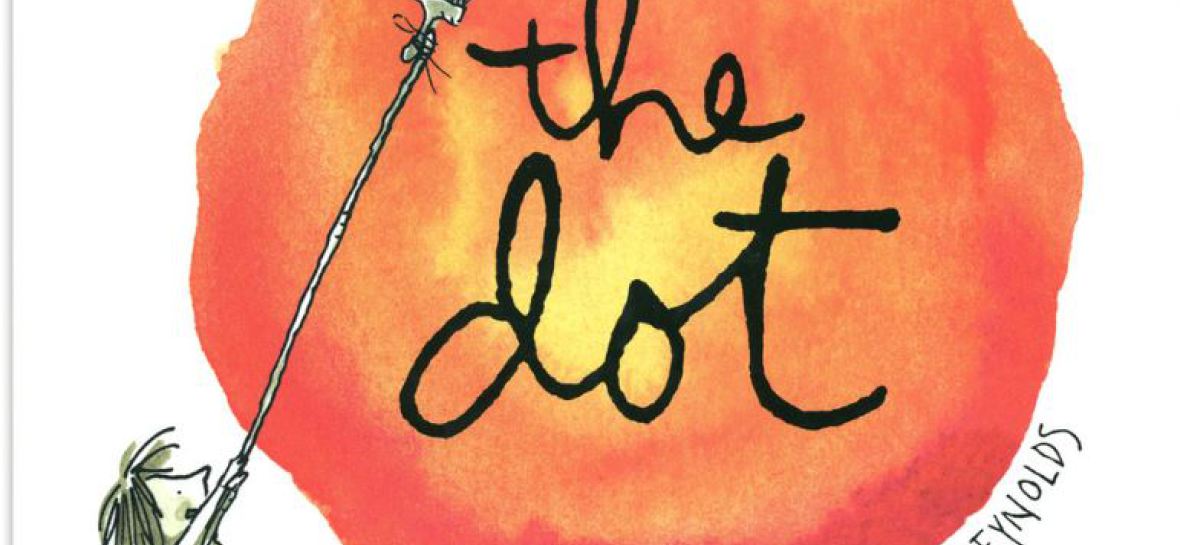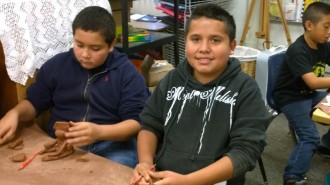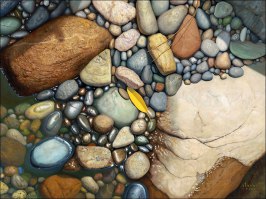

California Dreamers
C...Creating
Collaboratively set goals and create artwork that is meaningful and has purpose to the makers
Enduring Understanding: Artists and designers shape artistic investigations, following or breaking with traditions in pursuit of creative artmaking goals.
- See more at: http://nationalartsstandards.org/customize-handbook
A...Articulating Artistic Process
F...Finding Connections
- See more at: http://nationalartsstandards.org/customize-handbook
E...Engaing with the Art
Analyze components in visual imagery that convey messages.
Process Component: Perceive
Anchor Standard: Perceive and analyze artistic work.
I Can Understand and Talk About What I Hear & See (Revised to use with Art)
I can effectively participate in different types of discussions and with different people.
SL.4.1
I can build on others’ ideas and express my own ideas clearly. SL.4.1
I can come to discussions prepared to participate because I have studied appropriate
materials. SL.4.1
I can use my preparation to explore new ideas about a topic during a discussion. SL.4.1
I can follow agreed-upon rules for discussion and carry out my assigned role. SL.4.1
I can ask and answer questions to help me understand discussions, stay on topic and contribute to others’ ideas and remarks. SL.4.1
I can think about what is discussed and explain any new thinking that I have. SL.4.1
I can paraphrase text read aloud or information presented to me, or viewed by me.
SL.4.2
I can identify the reasons a speaker/artist gives to support his/her points. SL.4.3
I Can Share What I Know
I can report on a topic or tell a story with correct and appropriate facts and details to support my main idea.
SL.4.4
I can speak clearly and at an understandable pace.
SL.4.4
I can create engaging audio recordings or visual displays to help me show main ideas or themes when necessary. SL.4.5
I can figure out when to use standard formal English and when
I can use informal
I Can Write Different Types of Writing
I can use my point of view with reasons to share my opinion. W.4.1
I can clearly write to inform and to explain my ideas. W.4.2
I can write stories using a clear sequence of events and
descriptive details. W.4.3
I Can Make My Writing Better
I can produce clear, developed and organized writing. W.4.4
I can write for different purposes, audiences and topics. W.4.4
I can plan, revise and edit my writing with the help of peers and adults. W.4.5
I can use technology to create pieces of writing and to interact and share ideas with others.
W.4.6
I can use appropriate keyboarding skills to type one page of my writing at a time, in a single sitting.
W.4.6
I Can Use Research to Help My Writing
I can conduct short research projects to help me learn about topics.
W.4.7
I can research and use what I have experienced to gather information. W.4.8
I can take notes to help me organize the research in my writing. W.4.8
I can provide a list of sources that I used for gathering information. W.4.8
I can gather evidence from all my reading of words or text to support my writing.
W.4.9
I can write on a regular basis with stamina for different tasks, purposes, andaudiences.
I Can Read and Understand Fourth Grade Fiction RL.4.10
I can explain a story or art by referring to details and examples in the text. RL.4.1
I can make conclusions about an author’s/artist's meaning by thinking about the details and examples in the text (drawing conclusions). RL.4.1
I can figure out the theme of a piece of fiction by thinking about the details in the text. RL.4.2
I can summarize a piece of fiction/art in my own words. RL.4.2
I can use specific details in a story/art to help me describe a character, setting or event in the story. RL.4.3
I can figure out the meanings of words and phrases an author uses. RL.4.4
I can understand words that may be derived from characters found in mythology (e.g., Herculean).
RL.4.4
I can write and talk about the differences between poems, plays and fictional stories.
RL.4.5
I can refer to specific elements of poems (verse, rhythm, meter) and plays
(characters, settings, descriptions, dialogue, stage directions) when I write or talk
about a piece of fiction. RL.4.5
I can compare and contrast different stories by thinking about the different points
of view. RL.4.6
I can tell the difference between first- and third- person narrators.
RL.4.6
I can make connections between a written text and a dramatic interpretation of the same text or artistic Interpretation
RL.4.7
I can compare and contrast similar themes and events in stories, myths and traditional literature/art from different cultures. RL.4.9
Artful Teaching
Mrs. Schellenberg & Young Artists
Ralph Waldo Emerson's Poem: Success- to leave the world a bit better, whether by a healthy child, a garden patch or a redeemed social condition; To know even one life breathed easier because of you.
Thank you AT&T
We used the wiring for our artful galimotos





